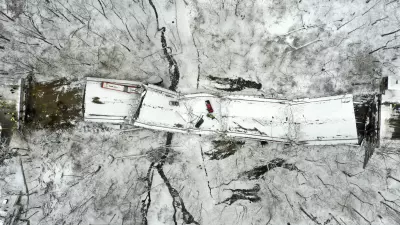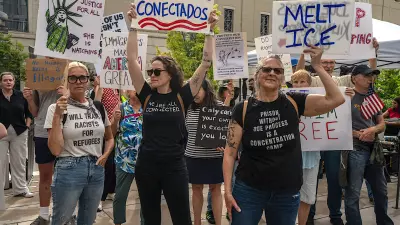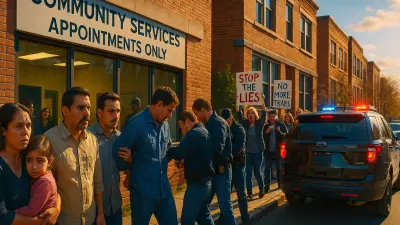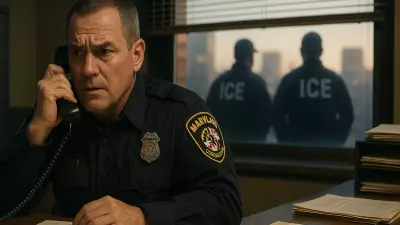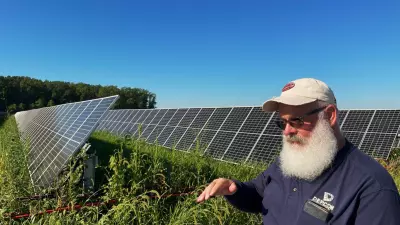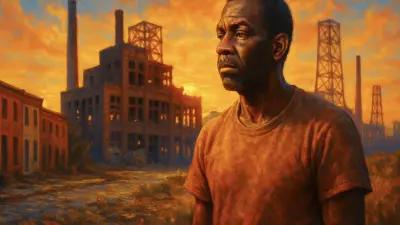When I learned that a bridge collapsed in Pittsburgh, I was worried the death toll would be substantial.

That there were no fatalities and relatively few minor injuries — with a city bus on the bridge when it fractured — was a relief.
But then, I started feeling something else.
I got pissed. And I still am.
It’s infuriating that, as a native Pittsburgher, I wasn’t the least bit surprised that one of the city’s hundreds of bridges crapped out during a snowy morning commute.
Not. At. All.
You see, I’ve spent a lot of time exploring Pittsburgh’s hidden nooks and crannies, its bridges included. And while I’m no structural engineer, I’m pretty certain that rusted support beams and other visible signs of deterioration are not ideal.
Rotting bridges aren’t only a Pittsburgh problem, though a city with so many of them should be especially concerned. Lots of American bridges are considered as damaged — by experts, mind you — as the Fern Hollow Bridge that now resides at the bottom of a deep, wooded ravine that’s also a park.
From Reuters:
Like nearly 44,000 other spans nationwide, the Fern Hollow Bridge in Pittsburgh is rated in poor condition, according to the U.S. Department of Transportation’s 2021 national inventory.
Think about that: 44,000 American bridges are rated as bad as one that fell into a public park enjoyed by children and adults alike.
Not only should this piss you off, it should also be a source of extreme embarrassment.
And not just for Pittsburghers.
But for all Americans.
Sure, the $1 trillion infrastructure bill signed into law last year will repair some of the bridges deemed problematic before they, too, collapse. And Biden being on hand the same day might jumpstart “building back better.”
But, dammit, it shouldn’t take a once-in-a-century, herculean, bipartisan legislative effort and a freaky, POTUS-appearing coincidence to prioritize fixing our aged and crumbling infrastructure.
This is something we should instinctively want to do. You know, because a safe, reliable infrastructure is a good thing.
Right?
Unfortunately, our instinct for self-preservation by way of maintaining America’s bridges and roads is superseded by our inability to govern ourselves effectively.
Because real, functioning democracies stay on top of this shit — they don’t let their nation’s roadways appear war-torn (I kid you not, there are way better roads in parts of Iraq than in some corners of Pittsburgh) and become potential deathtraps.
American infrastructure was once the envy of the world. After World War II, the United States embarked on a building boom that connected the nation coast to coast with safe and reliable ways for a nation in a hurry to get up and go.
Creating America’s modern (at the time) infrastructure led to a period of economic prosperity and growth unrivaled in human history. We did it once. We can, and must, do it again.
Alas, our nation’s infrastructure being in such a sorry state is a symptom of a greater illness. Because this is what happens when democracy is on the ropes, when the partisan divide in Washington is at its worst since the end of the Civil War, and even commonsense infrastructure spending is a contentious issue.
Last January, we witnessed the near collapse of our democracy on Capitol Hill at the behest of toxic misinformation peddlers who inspired their minions to carry out a coup attempt while eroding the cornerstone of the American Experiment: free and fair elections.
A healthy democracy depends on citizens’ faith in, and respect for, the electoral process. But ours is beginning to buckle under the weight of toxic irreverence for that very foundation on which our nation is built.
Meanwhile, crumbling infrastructure and governance hamstrung by ignorant and fame-obsessed lawmakers (like you can’t guess who I mean) aren’t the only structural defects we face.
Too many of America’s news outlets have been gutted and shuttered over the last few decades, resulting in fewer nosy reporters peeking under bridges and obtaining state and federal inspection records chronicling the rot from within.
With so much of America’s foundation showing signs of fatigue, we, as a nation, must begin to take better “self-care.” We can’t assume someone else will come and fix it for us. It’s up to all of us to shore up America’s physical and ideological infrastructure so that we might repair what’s been damaged by our neglect.
But first and foremost, we can’t have any more bridges fall down.
It’s just too embarrassing.

